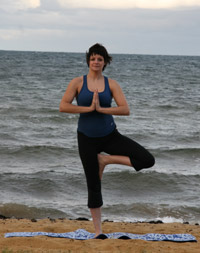 Mood Yoga—The Method & The Book
Mood Yoga—The Method & The Book
2. East Meets West
The wisdom of the East has many parallells in Western psychology and modern science (e.g. quantum physics). Quantum theory explains how the mind and spirit are connected and how working with one area of the body/mind/spirit has the power to change the whole. According to QT, the observer is always involved in the outcome of what is being observed. Hence, we cannot help but affect the outcome of our lives, whether consciously or unconsciously. Mood Yoga highlights a connection between the psyche (mind), the spirit and prana (Sanskrit for life-force)—a connection reflected in the origin of all three words: 'of the breath'. This connection explains the true purpose of yoga practice on all levels (physical, psychological and spiritual): to unify or intergrate the body, mind and spirit.
I am hoping to release my book, of the same name, later this year. Once you have read this book you will begin to think of yoga as a practical tool for well-being independent of any preconceived ideals. It is important to note that this is not a book about religious beliefs nor is it a book about denial or suppression of emotion. It is a practical guide to feeling well based on the ancient wisdom of yogic tradition. The following points outline some of the principles behind Mood Yoga:
- You don't need any yoga experience to practice Mood Yoga
- All of the basic principles of yoga practice are easliy explained
- Mood Yoga works with the physical and the emotional life to gain a positive result
- Mood Yoga uses positive self-talk along with physical expression of feeling to achieve balance and wellbeing
- Mood Yoga is a feel-good experience designed to empower the individual
Pictured: Kate Wiesner, photographed by Roger De Zilwa
| Mood Yoga—The Method & The Book Continued: |
Background Concepts to Mood Yoga: |


